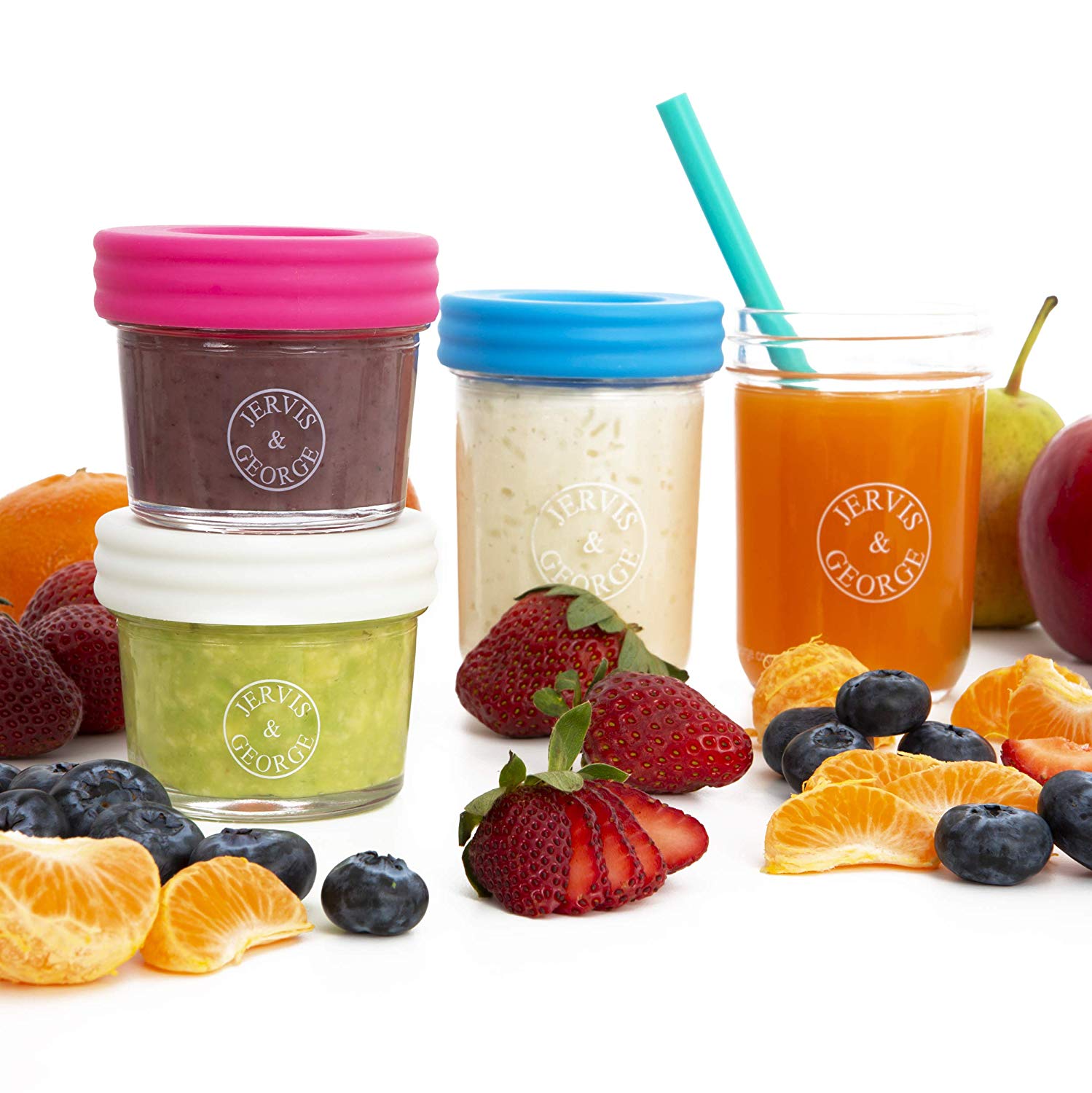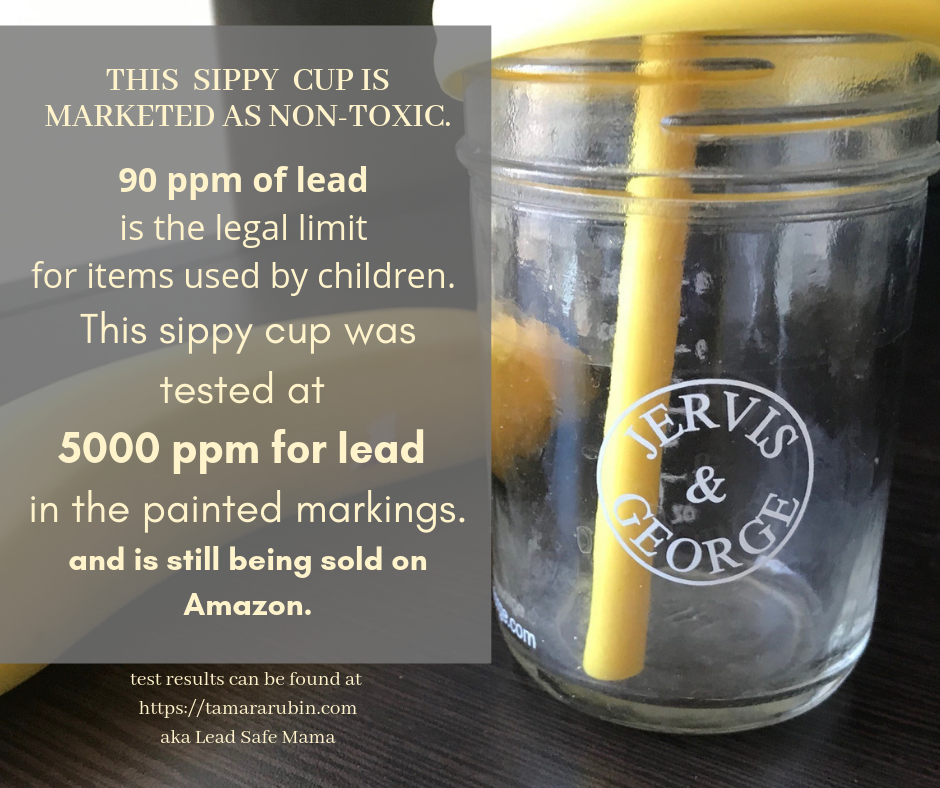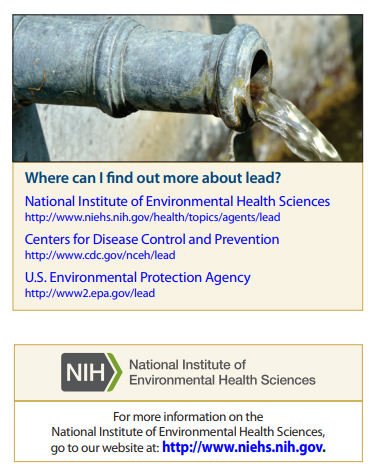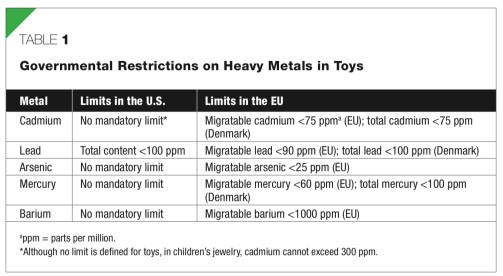Sippy Cup Tested for Astronomical Amounts of Lead and Cadmium

90 ppm is the legal limit for lead in items to be used by children. This child’s sippy cup was tested at 5000 ppm for lead in the painted markings and is still being sold on Amazon. This case is especially egregious as the company is denying the jars have Lead (in correspondence with customers since a blog post was first published with test results on this brand back on 9/16/18) AND they advertise them as being “Lead-free” (so customers are specifically purchasing them in order to have a Lead-free option!
A regulatory loophole puts your child at risk of heavy metal exposure.
All the regulatory agencies that are fed tax payer funds to protect us, including CDC, EPA, and CPSC have, in recent years, finally acknowledged the long-held consensus in the scientific community — that there is actually no safe level of lead exposure for children, and accordingly officially adopted that explicit language.This obviously implies that it cannot be considered “safe” to have Lead in products intended for use by children or for use with children, and accordingly stringent regulatory standards were required to reflect this reality.
“Zero” in regulatory terms becomes “however close to ‘zero’ industry representatives say is “realistically feasible”. As a result, in 2008 the Consumer Product Safety Improvement Act (CPSIA) set “90 ppm lead” (in the paint or coatings of items intended for use by children) as the new hazard level (phased in by 2010) at or above which it is illegal to sell this item to be used by children.)

When testing the “Jervis & George” brand reusable glass jar (with yellow sippy cup top) pictured here, all of the white painted markings on the outside of the glass were positive for unsafe levels of Lead (high Lead-content paint — with levels consistently above 6,000 ppm Lead).
Exactly how much Lead (and Cadmium) was found on these jars?
This particular child’s sippy cup jar had the following lead readings:
The white painted markings on the glass:
- Lead (Pb): 6,422 +/- 157 ppm
- Cadmium (Cd): 88 +/- 10 ppm
- Barium (Ba): 216 +/- 49 ppm
- Zinc (Zn): 46 +/- 18 ppm
- Titanium (Ti): 12,000 +/- 500 ppm
The yellow top:
- Copper (Cu): 25 +/- 13 ppm
- Iron (Fe): 36 +/- 20 ppm
- Titanium (Ti): 2,732 +/- 317 ppm
The yellow straw:
- Barium (Ba): 613 +/- 212 ppm
- Zinc (Zn): 75 +/- 15 ppm
- Iron (Fe): 65 +/- 34 ppm
Note: All tests reported on this blog are science-based and replicable. Tests are done for a minimum of 60 seconds each, using a Niton XL3T, testing in “Consumer Goods” mode. If a metal is not listed, that means that particular metal was not detected using an XRF instrument in Consumer Goods mode.
This is consistent with other products from this brand tested by activist Tamara Rubin .
THE INSANE LOOPHOLE:
There is an atrocious loophole that is allowing Lead in the painted markings of baby food containers, baby bottles, sippy cups and other items intended for children — for FOOD USE, no less.
Because there is so little actual paint on the surface of these jars or bottles, even though the paint has an extremely toxic level of Lead and even though Federal agencies agree “no amount of Lead exposure to children is safe“, the CPSC has maintained the position that it considers the Lead paint on products like this to be “an acceptable amount of Lead paint” and therefore these products are in compliance with current (ridiculously stupid!) regulations.
What is the solution?
What should the consumer do? Consumers should consider tossing these products or returning them for a refund. Read more about that here. Consumers should also make a complaint to the CPSC.
Looking for an alternative?
Click here to see a good lead-free choice! (affiliate link benefits Tamara Rubin – Lead Free Mama)
To our knowledge, no one else is currently doing the depth and breadth of independent consumer goods testing that Tamara Rubin is doing (no individual nor public agency for that matter!) If you appreciate this work (if you find it valuable and helpful), please consider chipping in to help cover some of her advocacy costs. A gift of any amount WILL make a difference! [Chip-In Link.]
RESOURCES:

1 https://www.popsci.com/lead-water-what-are-health-effects-dangers#page-2
2 http://www.osh.net/articles/archive/osh_basics_2001_may26.htm
3 National Toxicity Program printable brochure on low levels of lead: https://ntp.niehs.nih.gov/ntp/ohat/lead/final/monographhealtheffectslowlevellead_newissn_508.pdf





